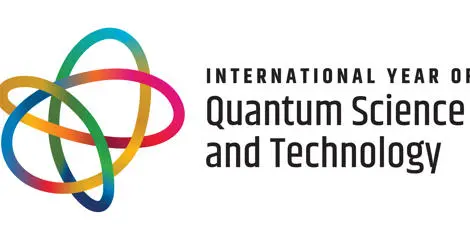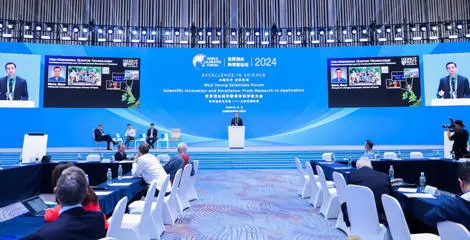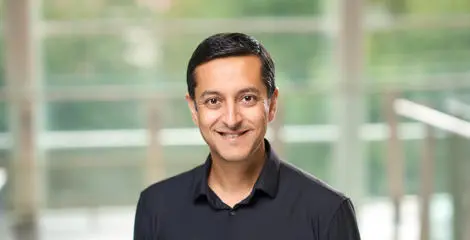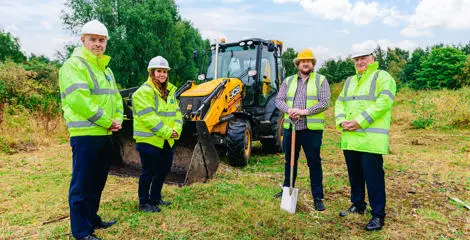Illuminating the quantum frontier: Heriot-Watt and NASA are transforming single-photon tech
Heriot-Watt University has long been at the forefront of developing cutting-edge research in quantum science and technology.
One of our most exciting current collaborations exemplifies our drive for discovery and innovation: a joint project with the University of York, the Jet Propulsion Laboratory (JPL) at NASA, and the California Institute of Technology (Caltech). This initiative sits within the wider UK Quantum Technologies Programme, illustrating how academic institutions and industry partners can come together to propel scientific breakthroughs that benefit multiple sectors.
Why single-photon detection matters
At the heart of this collaboration is the drive to push single-photon detection technology to new heights. Single-photon detectors operate at the very limit of sensitivity, capturing individual photons (the smallest units of light). This capability is crucial for quantum communications, in which information is encoded in single photons and transmitted securely, and for advanced imaging techniques able to detect extremely faint objects or look beyond barriers. Single-photon detection also underpins a variety of emerging applications, from more precise medical imaging to real-time 3D mapping (sometimes called lidar) in challenging, low-light environments.
By working with NASA’s JPL and Caltech, Heriot-Watt researchers can access some of the most sophisticated detector systems in the world. JPL’s engineering expertise, particularly in the fabrication of superconducting nanowire single-photon detectors, complements the University’s pioneering work in quantum photonics. Building upon these cutting-edge detectors, Heriot-Watt can conduct a range of experiments that were once beyond reach, including extremely sensitive quantum communication tests and advanced imaging demonstrations.
Quantum entanglement, explained simply
Central to many quantum applications is the phenomenon of ‘quantum entanglement’. Entanglement occurs when two or more particles—often photons in our case—become so closely linked that measuring one instantly affects the state of the other, even if they are separated by vast distances. This remarkable property not only challenges our intuitive understanding of physics, but also enables techniques such as quantum encryption, where entangled particles help secure data transmission in a way that traditional methods cannot. In the realm of imaging, entanglement can enhance resolution, allowing us to probe objects or biological samples with astonishing new levels clarity.
Partnering across continents
The collaboration extends far beyond a single laboratory or region. With the University of York, Heriot-Watt is working to integrate these state-of-the-art detectors into the UK’s quantum communications testbeds, linking multiple sites to demonstrate advanced security protocols. NASA’s JPL, located in Pasadena, California, brings decades of expertise in space exploration and photonics engineering. Its facilities are ideal for refining the cryogenic and high-speed electronics that power the most sensitive single-photon detectors in the world. Meanwhile, Caltech’s In-Q-Net laboratory provides further resources and intellectual input, blending physics, engineering, and computational research to push quantum technology to its limits.
Notably, this transatlantic partnership offers a unique opportunity for young scientists to develop vital skills. Early-career researchers from Heriot-Watt regularly participate in specialised training at JPL and Caltech, accessing seminars and short courses and working alongside NASA’s team of engineers. This knowledge exchange not only benefits the individual researchers—who gain hands-on experience with some of the world’s most advanced quantum hardware—but also strengthens the ties between the UK’s and the USA’s quantum communities.
Innovation for tomorrow’s technologies
The end goal is not purely academic. There is a clear ambition to translate the findings of this research into practical solutions that address real-world challenges. One prominent example is satellite-to-ground quantum communications. Securely transmitting data across vast distances, perhaps even between Earth and satellites, promises to transform everything from financial exchanges to defence communications. Moreover, the same single-photon detection methods show promise in next-generation medical imaging. By detecting incredibly faint light signals, clinicians could one day see deeper into biological tissue without the invasiveness or high radiation levels of conventional scans.
Further applications include sophisticated lidar systems that capture images in near-dark conditions or map terrain with unprecedented precision. The quantum-enhanced sensitivity of these detectors can also open the door to new computing paradigms, where massive amounts of information are processed in parallel using quantum effects. Each strand of this research feeds back into the others, creating a thriving ecosystem of quantum innovation.
A blueprint for cross-sector collaboration
Beyond its scientific contributions, this partnership demonstrates how universities, government laboratories, and international partners can collaborate effectively. By aligning the complementary strengths of each institution, we collectively accelerate quantum research at a pace that no single organisation could match. What might once have been considered futuristic—in areas like quantum encryption or near-instant global communication—is now within tangible reach.
In short, the Ultrafast Single-photon Detection for Quantum Applications (USQA) project embodies Heriot-Watt University’s commitment to pushing boundaries through collaboration. By bringing together the research excellence of the University of York, the technological leadership of NASA’s Jet Propulsion Laboratory, and the advanced facilities at Caltech, we are laying a firm foundation for the next generation of quantum technologies. This exciting endeavour highlights the power of international partnerships to drive real, meaningful innovation that will shape the way we communicate, image, and understand the world in the years ahead.
Project name: Ultrafast Single Photon Detection for Quantum Applications
Project team:
- Professor Gerald Buller (Project Lead)
- Professor Alessandro Fedrizzi (Co-Investigator)
- Professor Jonathan Leach (Co-Investigator)
- Professor Mehul Malik (Co-Investigator)
- Dr Ross Donaldson (Co-Investigator)
- Fiona Neill (Project Manager).
Ready to transform tomorrow’s quantum landscape? Get in touch at GRID@hw.ac.uk to explore collaboration opportunities with our team.
Contact
Scott Holmes
Related content

European quantum light tour to be hosted at Scotland’s Heriot-Watt University
A quantum light source that’s travelling across 12 countries in Europe with UNESCO is being hosted at Heriot-Watt University in Edinburgh, its only Scottish stop on the tour.
Heriot-Watt to lead UK's push for ‘near-unhackable’ quantum internet
Heriot-Watt University announces its leadership of a new quantum research hub that aims to develop the ultra-secure 'quantum internet' of the future.

Why quantum technology can be Scotland's next big economic driver
Professor Gillian Murray, Deputy Principal for Business and Enterprise at Heriot-Watt University, explores the transformative impact of quantum on business and industry.

Physicists propose new approach that could unlock barriers to global scale quantum network
Physicists at Heriot-Watt have published research that could unlock barriers to a global-scale quantum network

Heriot-Watt quantum physicist joins world’s top scientists at World Laureates Forum
A quantum physicist at Heriot-Watt University is to join some of the world’s top scientists at a global event in Shanghai, China to promote science and scientific collaborations.

Heriot-Watt secures three awards to drive innovation in Scotland’s photonics sector
Heriot-Watt University has three funded projects in the first round of awards from the inaugural Photonics and Quantum Accelerator (PQA).

Universities play a key role in our space ambitions - Professor Gillian Murray
Universities like Heriot-Watt are pivotal to Scotland’s thriving space sector, leveraging expertise in quantum technologies, photonics, and advanced materials to drive innovation.

Heriot-Watt physicist Mehul Malik is honoured with prestigious Optica Fellowship
Heriot-Watt quantum physicist Mehul Malik has been elected a Fellow of global society Optica in recognition of his outstanding contribution to advancing optics and photonics.

Heriot-Watt University breaks ground on new £2.5M Optical Ground Station
Work has started on a new Quantum Communications Hub Optical Ground Station (HOGS), a state-of-the-art telescope which is being built on Heriot-Watt University’s Research Park.
